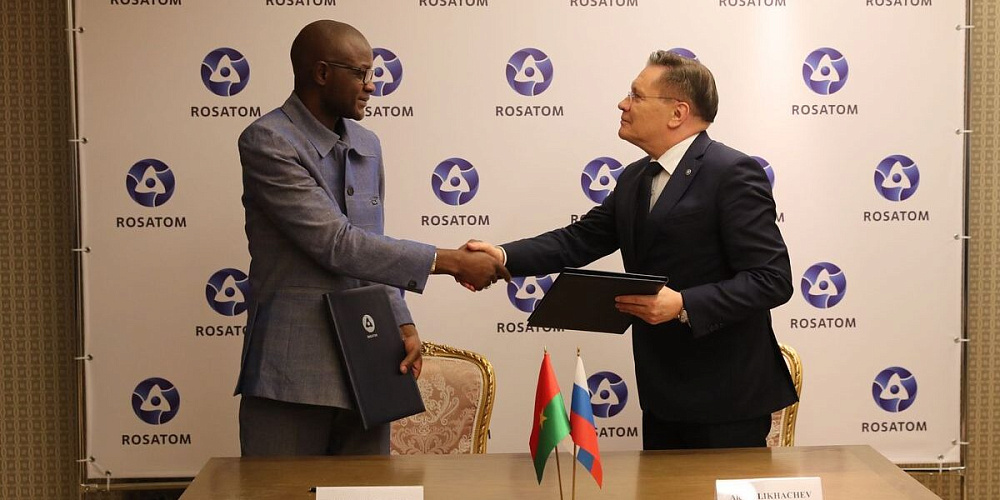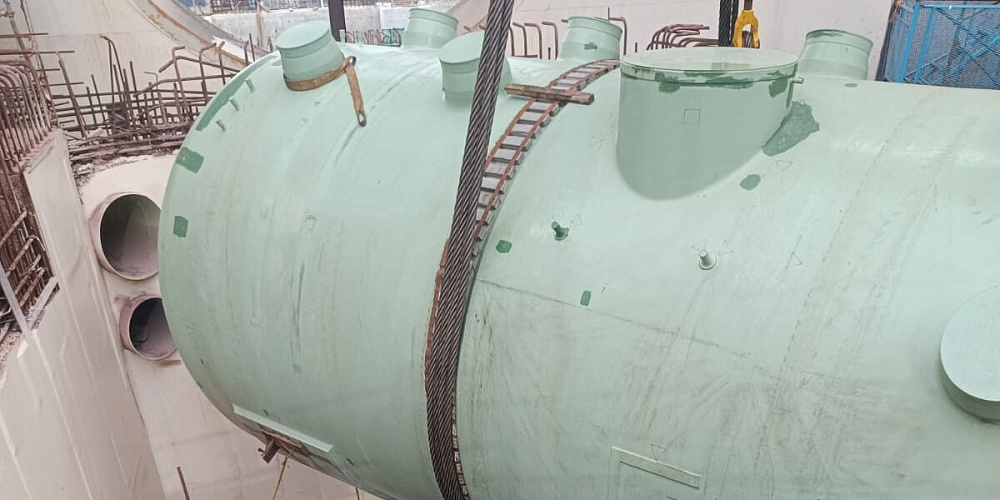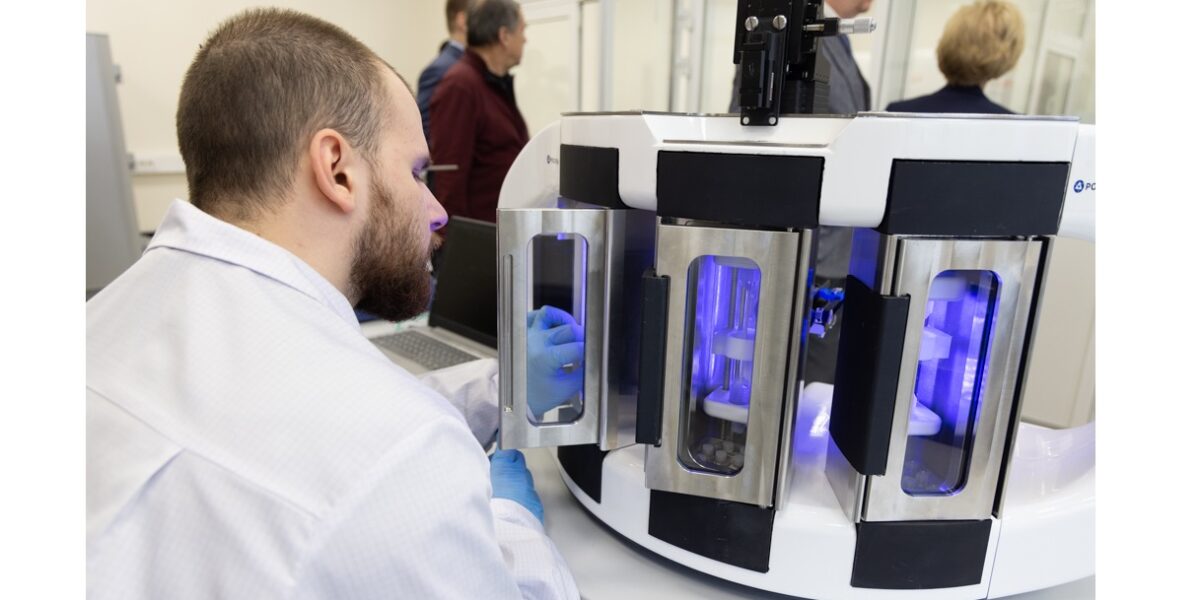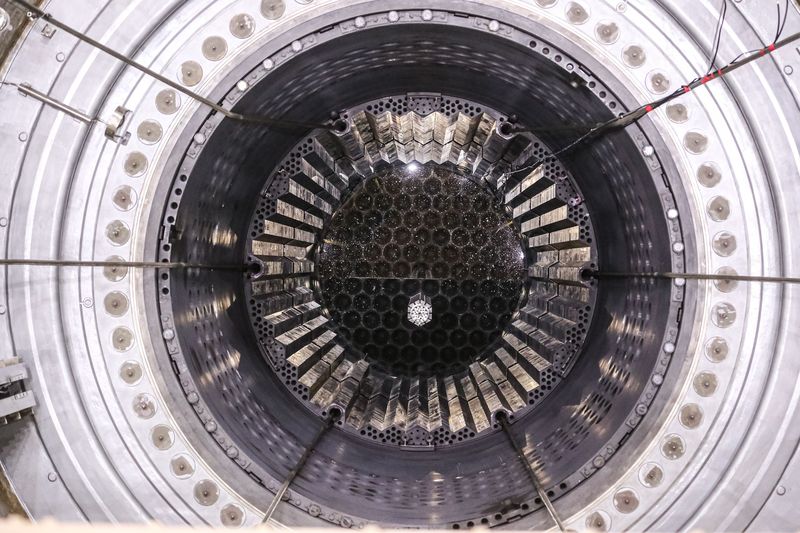On 25 September, "The Northern Sea Route in 500 Years" session was held at the international forum "World Atomic Week" (WAW – 2025) dedicated to the 80th anniversary of the Russian nuclear industry.
The event was attended by Igor Levitin, Special Representative of the President of the Russian Federation for International Cooperation in Transport; Sergey Vakhrukov, Head of the Presidential Directorate for National Maritime Policy; Andrey Chibis, Governor of the Murmansk Region; Sergey Frank, Chairman of the NSR Shipping Council; Fan Yuxin, Chairman of NewNewShipping Line; and others. Mikhail Bazhenov, Partner and Head of Business Consulting at Trust Technologies, moderated the session.
In his speech at the event, Vladimir Panov, Special Representative of Rosatom for Arctic Development, said: “We are seeing enormous interest in international transit via the Northern Sea Route (NSR). They have started shipping containerized cargo along the route. During the summer-autumn navigation season (which is not yet over), 14 voyages have already been made through the NSR, transporting 276,000 tons. This is 56% more than all shipments last year – 176,000 tons. And now there are three more voyages in the NSR waters. We are open to contacts and interaction. We believe that there is great potential in creating new international formats for equal and pragmatic dialogue with all interested states with the aim of developing the economic potential of the Arctic and the NSR, where no countries will be left behind.”
“The development of cooperation between China and Russia on the Trans-Arctic Transport Corridor represents a systematic and gradual approach. In 2022, there were no container shipments along the Northern Sea Route (NSR) between China and Russia. However, in 2024, 14 ship calls were made and more than 20,000 twenty-foot equivalent units (TEUs) were transported. Currently, plans to increase traffic volumes are being announced. This transition from China's involvement in Russian infrastructure projects to direct ship calls by Chinese shipping lines to Arctic ports along the NSR and now to discussions about developing ice-capable fleet and maritime infrastructure shows a high level of trust and interest of both parties. Over the next five years, it will be crucial to maintain this momentum of collaboration, expand joint investments, and foster technological cooperation in order to ensure the successful and sustainable development of the NSR as the key international trade route,” said Mikhail Bazhenov.
The Northern Sea Route (NSR) is the shortest shipping route connecting the western part of Eurasia with the Asia-Pacific region. This is a national transport artery of Russia with a long history of development. The length of the route is approximately 5,600 kilometers. Technological advances that have made the development of the NSR possible occurred in the past 70 years of its 5-century history. Today, the Arctic region continues to be a platform for technological innovations while the vector of the Arctic future development strategy is shifting towards meeting human needs and creating opportunities for economic and social growth. If 500 years ago, the interest in the Northern Sea Route (NSR) was associated with the search for easier access to Arctic resources, such as fur and minerals, today, it is about expanding technologies and developing opportunities for this international transport corridor.
The NSR as a national transport corridor of Russia in the Arctic region is crucial for the continued economic development of both the northern regions and the country. This route is a key component in a national unified logistics network from Murmansk to Vladivostok, connecting waterways from the western maritime border of Russia to the Asia-Pacific region. In 2024, Rosatom together with other interested federal executive bodies launched a new project "Development of the Great Northern Sea Route." This project aims to create a unified economic, transportation and logistics space stretching from the Baltic ports of Russia to Primorsky Krai (internal maritime waters, territorial waters and their land territories of the Russian Federation). The implementation of this project is expected to lead to the creation of a Trans-Arctic transport corridor and to the connection between the Northwest and Far East territories.
By decree of the President of the Russian Federation, 2025 marks the 500th anniversary of the Northern Sea Route development by Russia. The route history started in 1525, when Russian diplomat Dmitry Gerasimov first put forward the idea of using the NSR for maritime communication between Europe and Asia.
The World Atomic Week International Forum, dedicated to the 80th anniversary of the Russian nuclear industry, is being held at Moscow VDNKh from 25 to 28 September 2025. The Forum organized by Rosatom, includes the exhibition of the achievements of the Russian nuclear industry and its partners. The business program features thematic tracks such as: "Affordable Clean Energy", "Industrial Innovations: Improving Production", "Ecology: Making the Planet Cleaner", "Advanced Medicine: Protecting Human Health", "Digital Breakthrough", "Mobility: Logistics Without Borders", "Comfortable Environment", and "Science and Education: Driver of Progress". The youth program (from 27 to 28 September) includes the scientific and educational marathon "Knowledge. Pioneers” organized by the Russian society Znaniye within the framework of the national project "Youth and Children". The Forum also includes the II Youth Festival "Composites Without Borders".
The comprehensive development of the Russian Arctic and Far East is a national strategic priority. Increasing the cargo traffic along the NSR is crucial for the fulfilment of the tasks set for transportation and cargo shipping. The development of this logistics corridor involves organizing regular cargo transportation, building new nuclear icebreakers, and modernizing relevant infrastructure. Rosatom companies are actively involved in these efforts.



